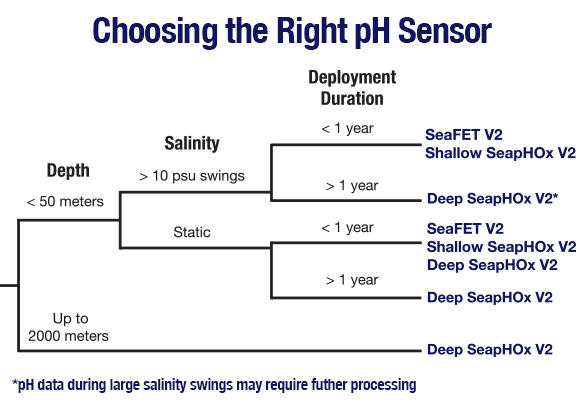The name “Deep SeapHOx V2” is a bit of a misnomer: although it’s designed for deployments up to 2000 meters, it isn’t just for the deep ocean. It is equally capable in both deep and shallow waters, can extend the deployment beyond the 1-year limitations of the Shallow SeapHOx V2, and generally requires less maintenance. However, in areas with rapidly changing salinity, the chloride-sensitive external reference electrode will temporarily misread pH as it adjusts to changing conditions. While this is a small matter for the Shallow SeapHOx (which also has a salinity-independent internal reference), the Deep SeapHOx only has the salinity-dependent external reference electrode.
So, do you need > 1 year deployment reliability, or are you deploying in an estuary with significant freshwater input? Either way, arm yourself with the proper knowledge to determine if you should utilize the Shallow SeapHOx V2 or the Deep SeapHOx V2.

